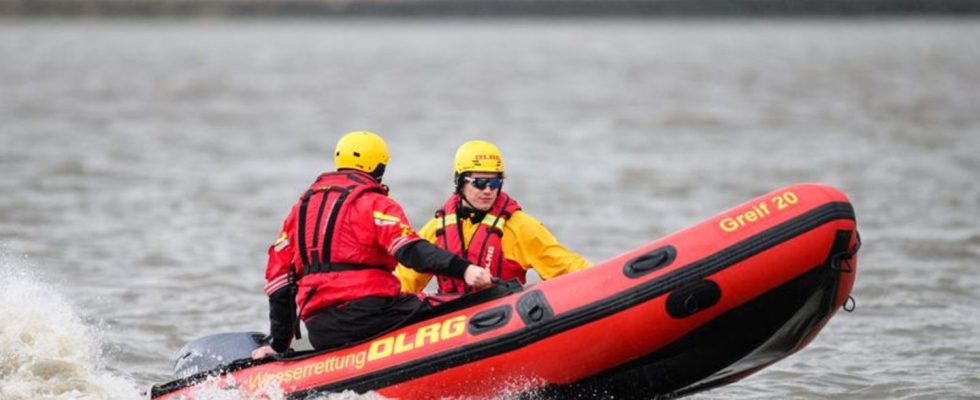Leisure time
DLRG is concerned about the safety of water bodies
Two DLRG rescuers with a rubber dinghy on the Elbe. photo
© Daniel Reinhardt/dpa
When it gets hot outside, most people are almost magically attracted to the water. The DLRG lifeguards have known only too well for 110 years that this can be dangerous.
“But if you can’t move safely in the wet element, you will be more at risk in, on and in the water for the rest of your life,” she emphasized. The proportion of older people who drown is also increasing because of the aging population. The DLRG celebrates its anniversary on Saturday in Bad Nenndorf with the Prime Minister of Lower Saxony, Stephan Weil, at a family party.
We need swimming pools all over the country
“All too often, health problems are the cause,” explained Vogt. “With a better knowledge of the problem, some of the fatal accidents could be avoided.” Nevertheless, it is important to start with the youngest: It must be possible for “all children to be trained to be safe swimmers at school,” warned Vogt. According to a Forsa survey commissioned by the DLRG, the proportion of primary school children who cannot swim rose from 10 to 20 percent between 2017 and 2022. “All boys and girls can only be reached in schools as an institution,” she emphasized.
“First of all, we need enough swimming pools all over the country,” Vogt demanded. But water rescuers can only be trained where there are well-equipped indoor pools. “The federal, state and local governments must significantly increase their efforts to create a needs-based pool infrastructure in the Federal Republic,” she warned. This also applies to outdoor pools as places of particularly safe bathing pleasure: “Because accidents occur in particular in mostly unguarded rivers and lakes.”
The DLRG was founded in October 1913
The rescuers recalled that up until the early 20th century, only two to three percent of the population could swim – and around 5,000 people drowned every year. According to the DLRG, the partial collapse of the pier in Binz on the island of Rügen in July 1912, in which 16 people died in the water, led to a rethink: On October 19, 1913, the DLRG was founded in Leipzig.
According to the DLRG, it now has around 580,000 members, and more than 42,000 lifeguards watch over the safety of bathers and water sports enthusiasts for more than 2.5 million hours a year. At least 192 people drowned in German waters by July 25 this year – 21 fewer than at the same time last year. “Being able to swim safely is the best prevention against drowning,” Vogt said. “So it’s not just about sport and fun, it’s about survival.”
110 years DLRG

